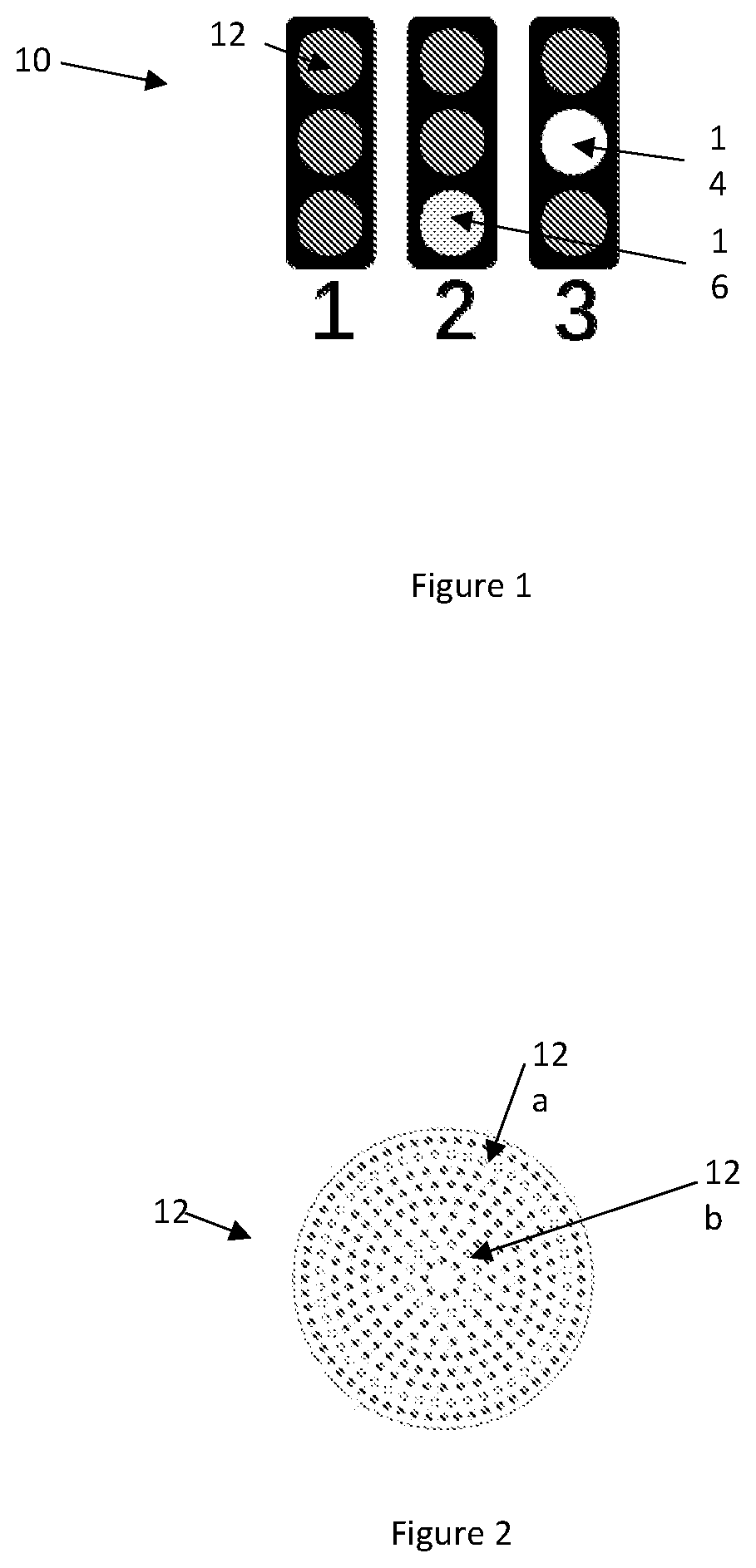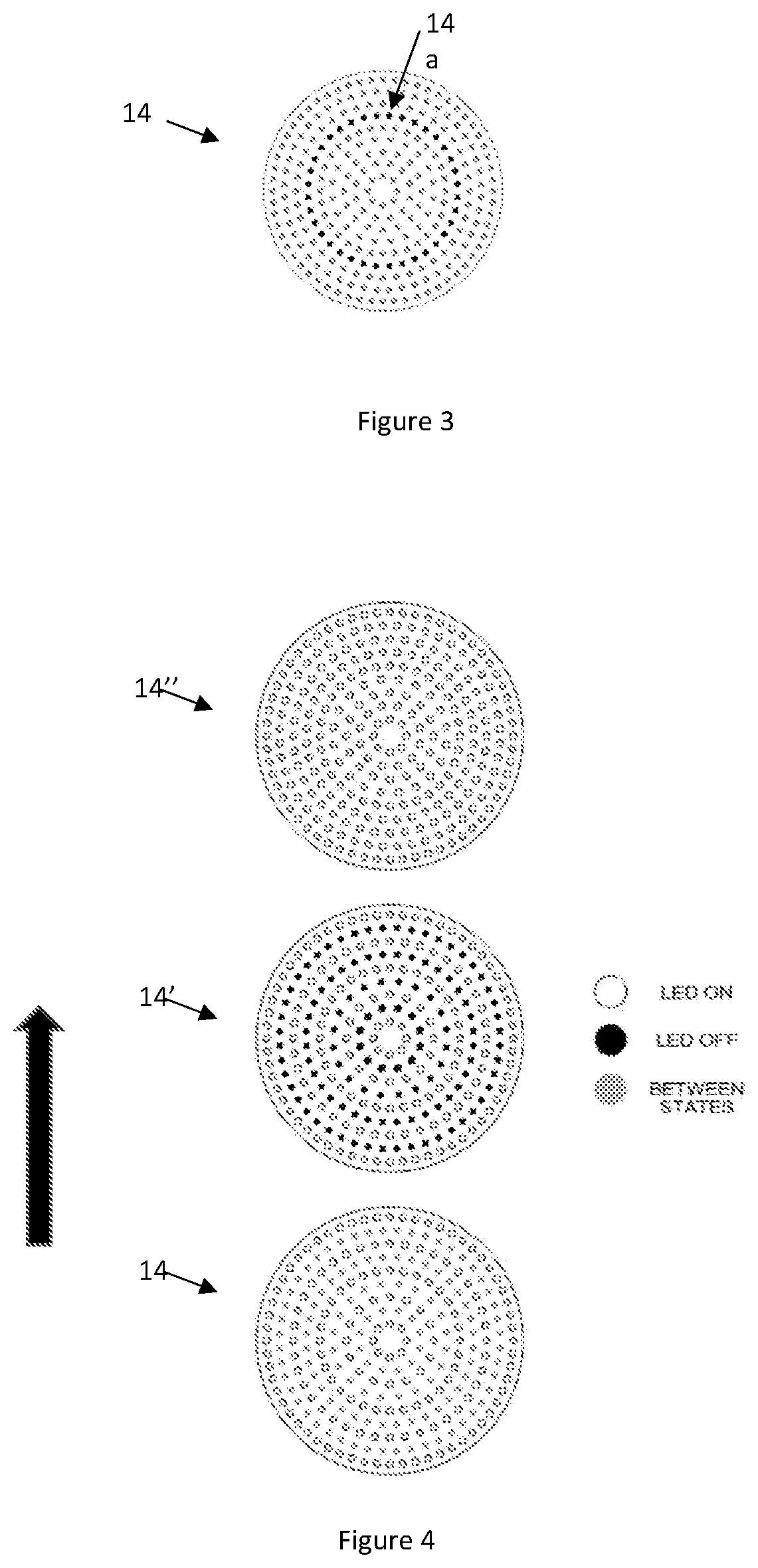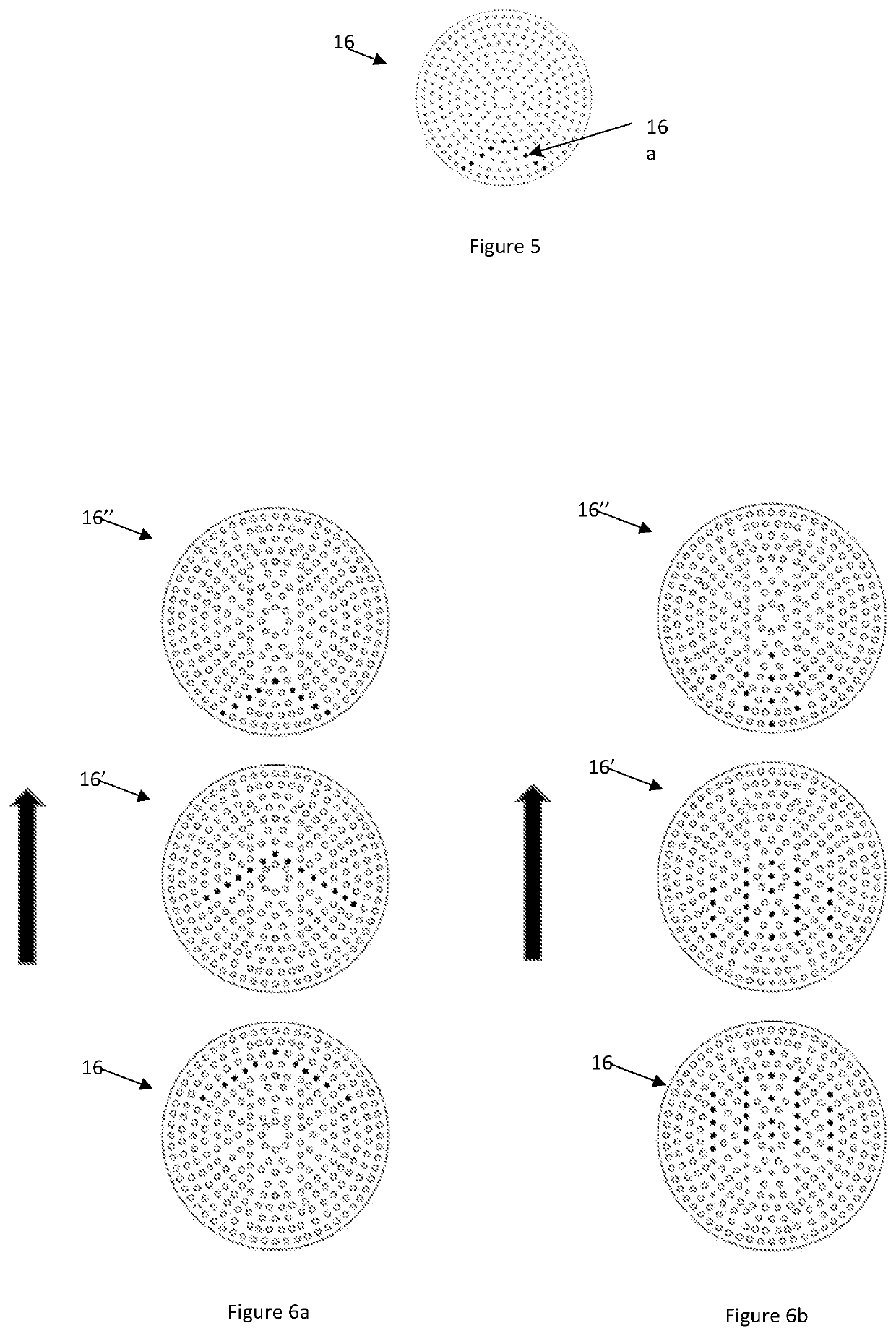Improved traffic light assembly
- Summary
- Abstract
- Description
- Claims
- Application Information
AI Technical Summary
Benefits of technology
Problems solved by technology
Method used
Image
Examples
Embodiment Construction
[0046]As shown in FIG. 1, the traffic light signals 10 can be of the type having three lights 12, 14, 16 arranged in a stack, with the topmost light being capable of emitting red light (1), the middle light being capable of emitting amber light (2), and the bottom light being capable of emitting green light (3). The image in FIG. 1 shows three traffic light assemblies, each with one light activated. These are the traffic lights that are most common in countries around the world. However, any orientation of traffic lights could be used as would be understood upon reading the description herein.
[0047]It is generally understood that a red light in a traffic light assembly means stop. The red light should be clearly transmitted to the person required to obey the traffic light.
[0048]In the present sequencing, when the red light is first activated, the light can be motionless for a predetermined period of time. The predetermined period of time can be at least 30, 60, 90, 120 seconds. The ...
PUM
 Login to View More
Login to View More Abstract
Description
Claims
Application Information
 Login to View More
Login to View More - R&D
- Intellectual Property
- Life Sciences
- Materials
- Tech Scout
- Unparalleled Data Quality
- Higher Quality Content
- 60% Fewer Hallucinations
Browse by: Latest US Patents, China's latest patents, Technical Efficacy Thesaurus, Application Domain, Technology Topic, Popular Technical Reports.
© 2025 PatSnap. All rights reserved.Legal|Privacy policy|Modern Slavery Act Transparency Statement|Sitemap|About US| Contact US: help@patsnap.com



